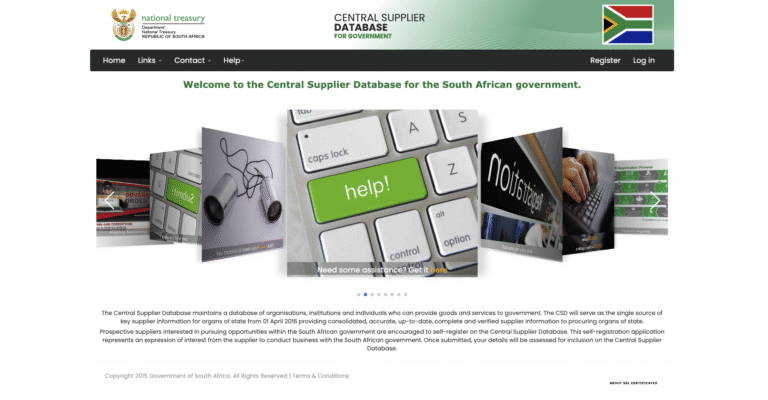Winning a tender can open doors to exciting opportunities, but there’s one crucial document you’ll need to secure first—a tax clearance certificate. This certificate proves you’ve met your tax obligations, giving businesses and government entities the confidence to work with you. Without it, your tender application might not even be considered.
Getting a tax clearance certificate doesn’t have to be overwhelming if you know the steps. Whether you’re a seasoned business owner or new to the tendering process, understanding how to obtain this document is essential. It’s not just about compliance; it’s about showing your reliability and professionalism in a competitive market.
What Is A Tax Clearance Certificate?
A tax clearance certificate is an official document issued by a government tax authority. It certifies that your business has complied with all tax regulations and does not have any outstanding tax obligations as of the date of issuance. This document demonstrates financial accountability and compliance with tax laws.
Businesses typically use a tax clearance certificate when applying for government tenders, contracts, or licenses. Government entities and major clients often require it to ensure that the businesses they engage with are tax-compliant. A tax clearance certificate may also be needed in specific situations, such as when expanding operations to different jurisdictions or securing financial services.
The certificate usually identifies the taxpayer by name or registration number, specifies the tax period it covers, and confirms the entity’s tax status.
Importance Of A Tax Clearance Certificate For Tendering
Having a tax clearance certificate ensures your compliance with tax regulations when participating in tendering processes. It confirms that your business meets legal tax obligations, positioning you as a credible and trustworthy candidate.
Government authorities and private entities often require a tax clearance certificate to verify that applicants maintain financial accountability. In public tenders, this document serves as evidence that your business operates transparently and without unresolved tax liabilities.
Obtaining a tax clearance certificate provides a competitive advantage. Many tender evaluation processes prioritize compliant entities, as it minimizes financial and legal risks for the client. Tendering without this certificate can disqualify your application, reducing opportunities to secure contracts.
This certificate also helps demonstrate your commitment to professionalism. A transparent financial record highlights your ability to manage fiscal responsibilities, building trust with stakeholders and strengthening your business reputation.
Steps To Obtain A Tax Clearance Certificate
A tax clearance certificate confirms your compliance with tax regulations, which is essential for tendering. Follow these steps to secure the certificate without delays.
Verifying Eligibility
Confirm your tax compliance status with the relevant tax authority. Ensure all due returns are filed and payments made. Incomplete filings or outstanding debts can result in application rejection.
Gathering Necessary Documentation
Prepare mandatory documents like your tax identification number (TIN), proof of tax payments, and completed tax returns for the required period. Include supporting details like business registration certificates or identification documents if requested.
Submitting The Application
Submit your application online or in person to the appropriate tax authority. Access the official portal or visit the tax office to access the submission process. Double-check that all form fields and attachments are accurate and complete.
Following Up On The Process
Monitor your application’s status through the tax authority’s tracking system or customer service channels. Address any queries or additional requirements promptly to prevent processing delays.
Challenges In Acquiring A Tax Clearance Certificate
Obtaining a tax clearance certificate for tendering can involve specific obstacles that may delay or complicate the process. Understanding these challenges helps you prepare effectively and avoid prolonged setbacks.
Common Pitfalls To Avoid
Missing Documentation: Incomplete or incorrect submissions, such as missing tax identification numbers or proof of payments, often result in rejections. Ensure all necessary documents meet the tax authority’s requirements.
Tax Arrears: Unpaid taxes or penalties prevent certification. Verify your tax account for discrepancies or outstanding obligations before applying.
Non-Compliance: Failure to meet regulatory obligations, like late filings or inaccurate declarations, raises red flags. Regularly audit your tax activities to stay compliant.
Outdated Information: Submitting outdated taxpayer details, such as old registration numbers, delays processing. Confirm all the provided data matches the current records.
Resolving Application Delays
Regular Follow-Ups: Contact the issuing authority to monitor your application’s progress and address issues promptly. Keep a record of reference numbers for efficient tracking.
Error Rectification: If application errors arise, immediately submit corrective documents or additional details requested by the tax body. Timeliness minimizes further delays.
Escalation Measures: When delays exceed the standard processing window, escalate the case through written appeals or tax ombudsman offices. Provide supporting evidence to fast-track resolutions.
Expert Assistance: Engage tax professionals to streamline the process. Tax consultants can ensure compliance, resolve disputes, and prepare error-free applications efficiently.
Tips For A Successful Application Process
Maintain Accurate Tax Records
Ensure your tax records are up-to-date and error-free. Confirm that all payments, filings, and registrations are complete before applying. Missing or incorrect records can delay the application.
Gather Required Documentation
Compile all necessary documents, including your tax identification number, proof of tax filings, and payment receipts. Missing documents can result in application rejection.
Confirm Compliance Status
Verify your compliance with the tax authority. Address any outstanding tax debts, penalties, or filing inconsistencies before submission to prevent denials.
Use Online Submission Platforms
Submit your application online if the tax authority offers digital services. Online processes often reduce waiting times and allow easier tracking of application status.
Follow Up Regularly
Monitor your application status through official platforms or customer service channels. Respond promptly to requests for additional information or documentation to avoid processing delays.
Seek Expert Assistance
Consult tax professionals if the process seems complicated. Professionals can provide guidance on compliance issues, documentation preparation, and submission accuracy.
Conclusion
Securing a tax clearance certificate is a vital step for any business aiming to succeed in the competitive tendering process. It not only demonstrates your compliance with tax regulations but also positions your business as trustworthy and professional in the eyes of potential clients. By staying proactive, maintaining accurate records, and following the outlined steps, you can navigate the application process with ease.
Taking the time to address potential challenges and seeking expert guidance when necessary ensures a smoother experience. A tax clearance certificate is more than just a requirement—it’s a powerful tool that enhances your credibility and opens doors to valuable opportunities.





